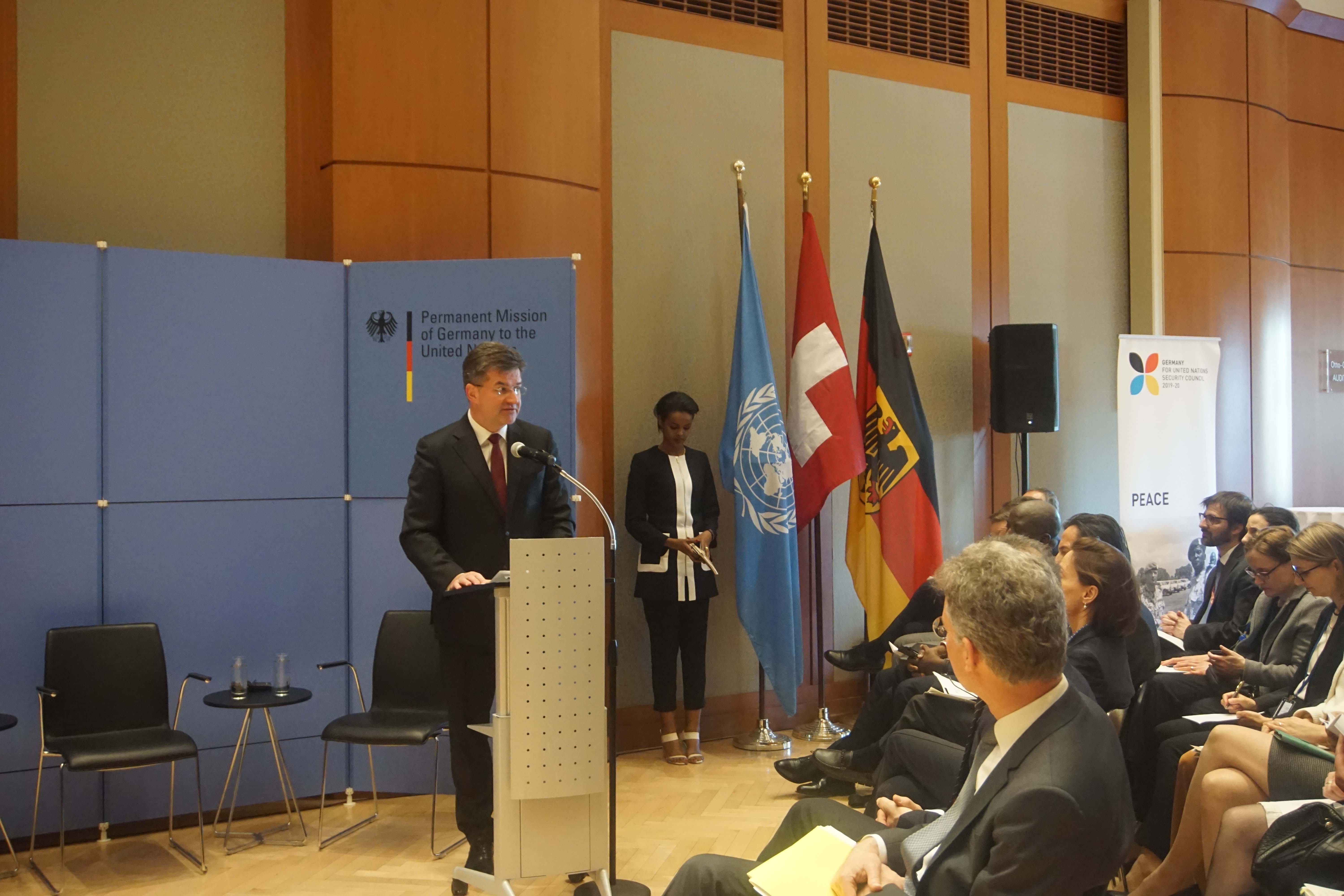The preventive potential of the UN human rights instruments – what does it mean in practice?

– As delivered –
Statement by H.E. Mr. Miroslav Lajčák, President of the 72nd Session of the UN General Assembly, at The preventive potential of the UN human rights instruments – what does it mean in practice?”
Good evening, everyone.
We are at the beginning, of a week of Sustaining Peace. And we are here to talk about human rights.
This is why I am grateful to Germany and Switzerland for bringing us all here.
And, to start us off, I will make two main points.
First, I want to say that we have never had a better understanding of peace.
We are learning more about what conditions it needs, to stick. And, about what can make it fall apart, into conflict.
And, as we learn more, about peace, we can better understand its relationship with human rights.
The recent World Bank-United Nations Report, called Pathways to Peace, poses the question: why do people fight? And, in response, it points to certain drivers of conflict:
Exclusion;
Inequalities;
And a sense of injustice.
And, all of these can be caused by human rights violations.
- People who are punished, because of what they believe or say.
- People who do not bother going to the police station or a courtroom, because they know justice is out of their reach.
- People who do not have their basic needs met, like water, housing and education.
- People who are discriminated against…violated….and attacked.
Not all of these people will turn to violence. In fact, most people remain peaceful – in the face of human rights violations.
But, they will feel excluded. They will feel unequal. They will feel a sense of injustice. And, like the report says, this could lead them to turn, more easily, to conflict.
This can happen to individuals. It can happen to certain groups, or communities. And it can happen, on a massive scale – to whole societies. Sadly, we are seeing all of these cases, around the world, today.
But, there is another side. Because, human rights can, also, contribute to peace. If they are respected, they can help to create other conditions– like accountability, inclusion, and equal access to justice and services. And this, in turn, can make societies more resilient – against conflict.
So, human rights abuses can be at the root of conflict. They can be a warning, that war is on the horizon. But they can also build stronger – and more resilient – societies.
So, as my second point, I will ask: how can we tap into the preventive potential of human rights?
We have a very strong mandate. The Sustaining Peace resolutions make it crystal clear: to achieve our goals we need all three pillars: peace and security, development, and human rights.
But, where to start?
Well, one area, in need of attention, is monitoring. The human rights system has a strong monitoring framework. Some mechanisms are rooted within the Human Rights Council. Others fall under various international human rights conventions.
And now, we need to start using them, for peace. Not only to flag early warning signs. But also, to guide our work in tackling the root causes of conflict.
Secondly, we need better links between New York and Geneva. It cannot be the case that New York is the home for peace, and Geneva for human rights. Expertise and capacities must be pooled; we need to join the dots.
Third, we need a cross-pillar approach. This does not mean, for example, that a project on preventing conflicts now includes an extra sentence on human right – or a line about Sustainable Development. Instead, we need communication, interaction and cooperation between all areas of our work.
And, finally, we need to hear from more voices from the field. Sometimes our own statements cannot do justice, to the realities on the ground. We need to hear from those, living them. We need them to show us, what a “human rights-based approach” means, on the ground.
We have a very strong mandate. The Sustaining Peace resolutions make it crystal clear: to achieve our goals we need all three pillars: peace and security, development, and human rights.
Ladies and Gentlemen,
To conclude, I will share a question, which I asked myself, before coming here.
What would happen, if all human rights were realised? From those in the Universal Declaration, to the almost 80 conventions we have adopted over the decades?
Do you think we would have the kind of conflicts, we see today?
My answer is no.
That is why our discussion, this evening, is so crucial. And I want to thank all of you, for your commitment.
Thank you.